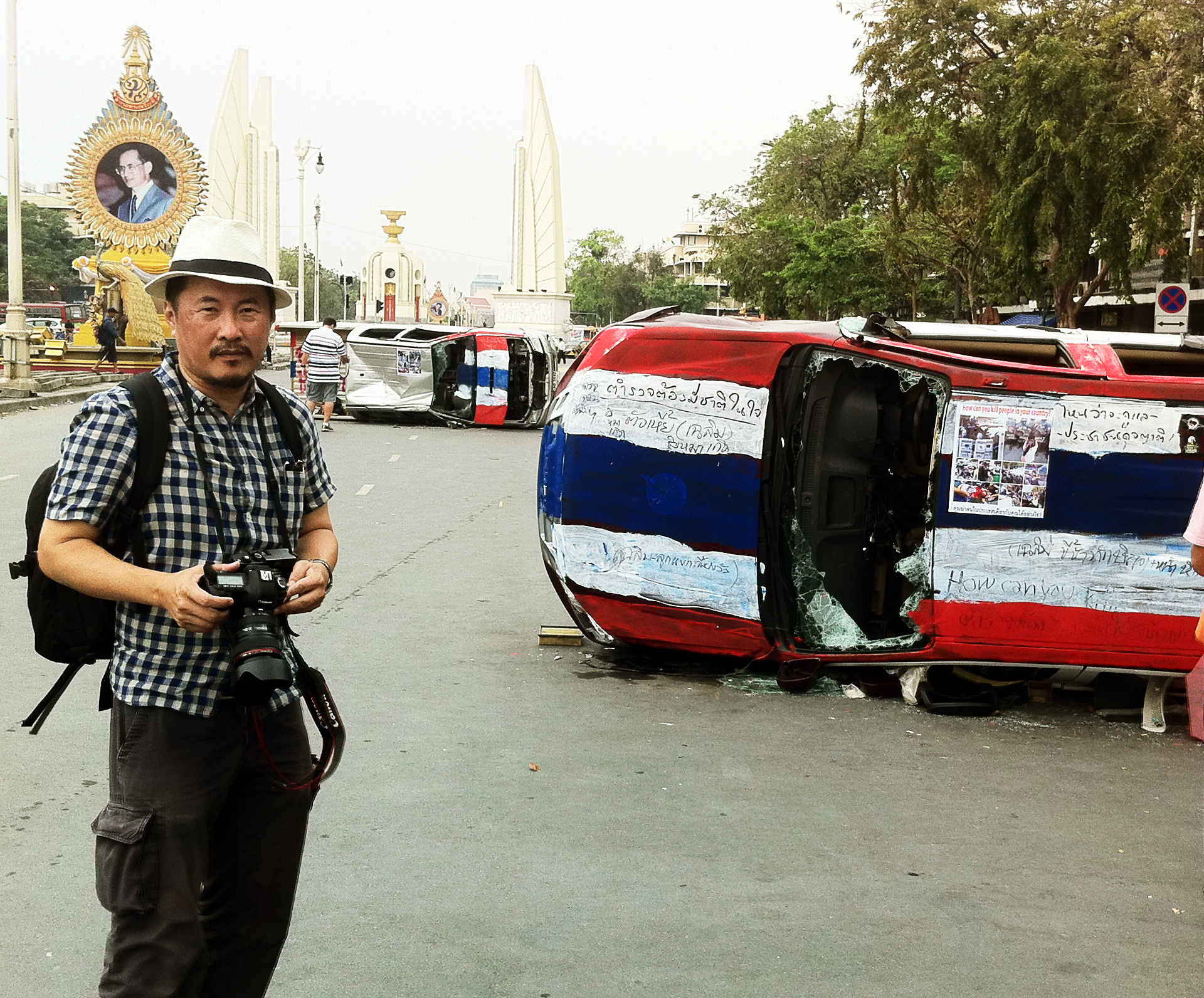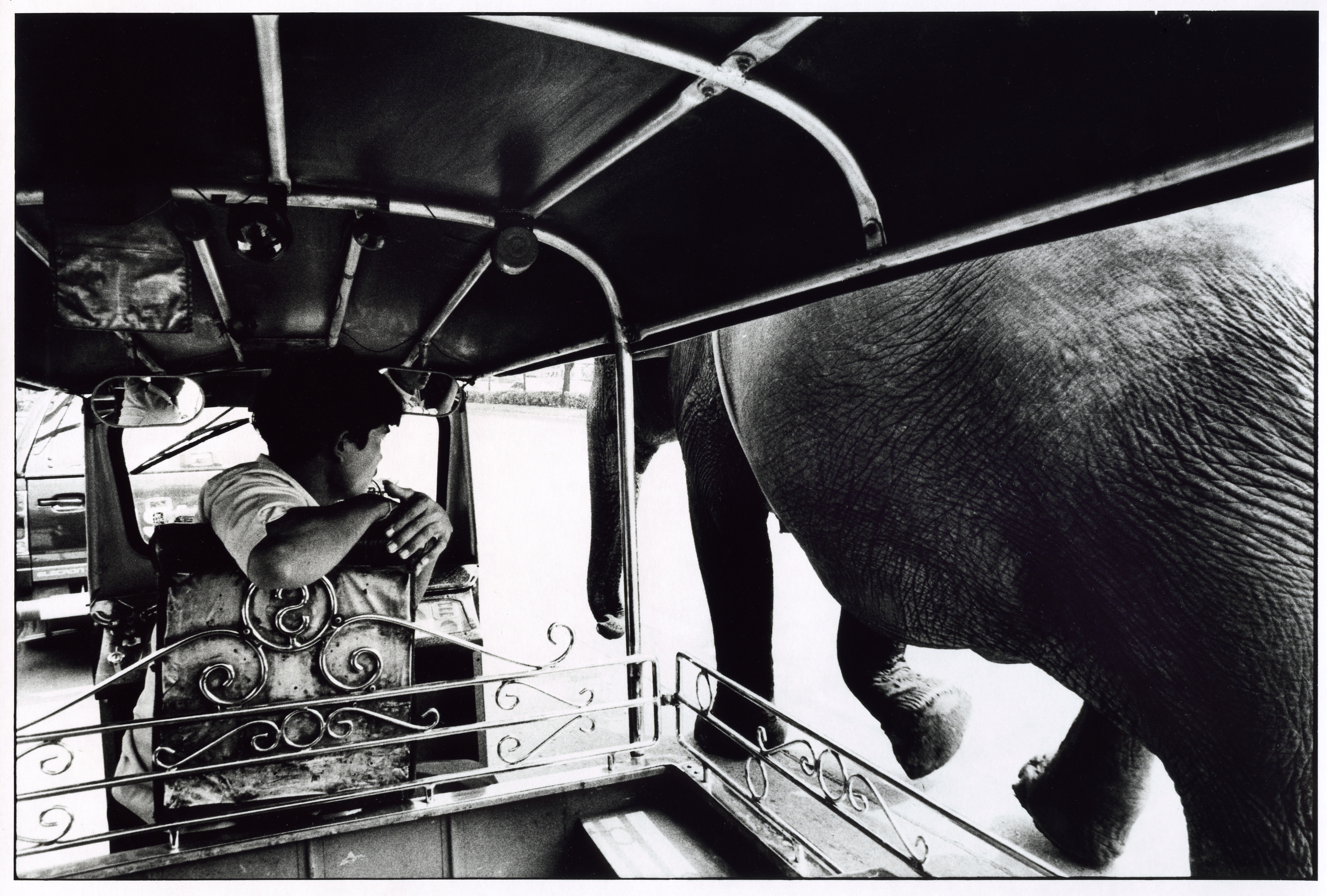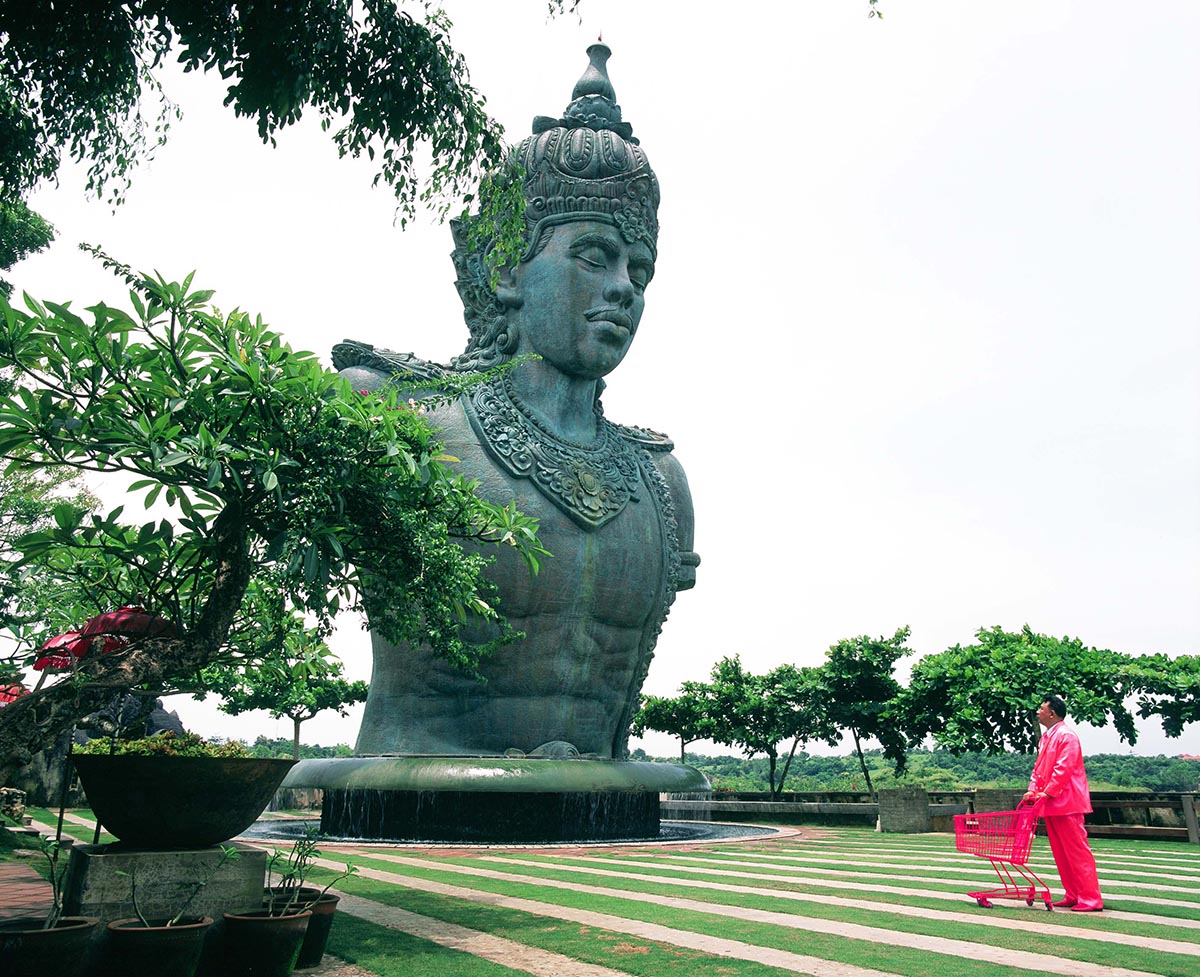In the era of Trump, Neoliberalism, Climate Change and rising inequality, I find Manit Sriwanichpoom to be a candle in a demon haunted world. One of Thailand’s best known photographers, he has been documenting political change, globalization and the question of what Thailand was, is and what it will become.
Now, he has opened Cinema Oasis to try and bring art house cinema to Thailand. It’s our great privilege to bring you an interview with this master artist.  1. What led you into Photography and why did you decide to open Kathmandu gallery?
1. What led you into Photography and why did you decide to open Kathmandu gallery?
MS: In 1980 while I was studying visual art at Srinakharinvirot University (Bangkok), I met a young Thai photo teacher Pramuan Burusphat who just graduated MA from the US. His exceptional photographic work has opened my mind and broadened my perception about photography. I decided to take it as a tool of expression of my idea.
In 2005 my wife Ing Kanjanavanit and I found a small shophouse near Wat Khaek (Hindu Temple) with a sign ‘For Sale’. She decided to have it and asked me to run it as a photo gallery. At first, I was shocked, never imagined to be a gallery owner or manager in my life, after time passed by I realized that Bangkok has never had a photo gallery before. So I decided to take her offer to run Kathmandu Photo Gallery (name given by Ing herself to honor Nepalese capital’s small photo gallery she found in ’80) since September 2006.

(“Which Way To Go” by Manit Sriwanichpoom )
- Your work has at times drawn on themes of globalization and capitalism. How do you see your photography addressing these issues and what critiques have you raised that you feel are relevant now?
MS: I think the themes of globalization and capitalism are always relevant much more than before since Mr. Donald Trump was elected as The US president. He’s against the globalization and migration. My ‘Pink Man’ could represent someone like Mr. Trump who doesn’t care what other people think about him as long as he still benefit against others.

Pink Man in Paradise # 7, 2003, by Manit Sriwanichpoom
3.Likewise, As an American in the age of Trump, the “Pink Man Series” comes to mind. Trump to me feels like a surreal character, a figure who is a gross exaggeration of capitalism or consumption. Can the Pink Man Series point us to any lessons or insights about our current political age?
MS: “In a democracy, people get the leaders they deserve.” – Joseph de Maistre, a French philosopher once said that. If we don’t like Trump so much that means we don’t like people who brought him to the power too. My question is how and what system could allow someone like him came to the power in the first place. This situation was like when Thailand got Thaksin Shinawatra to be our prime minister. The country became divided since then.

Horror in Pink #2 (6 October 1979 Rightwing fanatics’ massacre of democracy protesters.) The incident photograph by Kraipit Panvuth Concept & Pink Man photo by Manit Sriwanichpoom
- Many tourists come to Thailand to photograph the country, but not to engage in “photography”. What do you suspect may be going on with this desire to ‘capture every moment’ of one’s holiday. Do we miss anything by giving into this impulse?
MS: It’s really sad to see tourists spending their valuable time to photograph places and objects instead of absorbing them with their bare own eyes. They may think that they can look at the places and objects anytime they like after capturing which not true most of the cases. They have lost the sense of real experience in front of their eyes. What a shame, isn’t it!
 Horror in Pink #1 (6 October 1976 Rightwing fanatics’ massacre of democracy protesters) The incident photograph by Neal Ulevich – AP. Concept & Pink Man photo by Manit Sriwanichpoom
Horror in Pink #1 (6 October 1976 Rightwing fanatics’ massacre of democracy protesters) The incident photograph by Neal Ulevich – AP. Concept & Pink Man photo by Manit Sriwanichpoom
- Thailand is promoted to foreign tourists because it is so ‘photogenic’, everyone knows the famed shots of Muay Thai Fighters, pristine beaches, and elephants cuddling a traveler with their trunk. Do you believe that this promotion of the photogenic obscures some of the reality of Thailand from Tourists? If so is there anyway through photography we can reclaim a more balanced view of the reality of Thailand?
MS: Stop being a regular tourist yourself. Don’t believe or listen to a tour company and Thailand Authority of Tourism have told you to see. Find your own way exploring Thailand outside tourism destinations then you will find more about the country and that will be your real pictures that you want to take and keep.

- We know you are a huge believer in promoting both the past generation of Thai photographers and the next generation. Are their any names we should be made aware of who did or are doing good work in Thailand? Or any projects of your own that you’d like to mention?
MS: Currently, I have an exhibition called “Rediscovering Forgotten Thai Masters of Photography” at NUS Museum (National University of Singapore), running till December 1, 2018. There are over 200 old photographs from ’50 – ‘70 of 7 Thai photo masters that I found from my research during 2010 – 2015. The show has proved that Thai master photographers were not less than other western masters.
In July 2018, we will have the second edition of PhotoBangkok. The festival will spread over central of Bangkok where BACC (Bangkok Art & Culture Centre) will be the main venue including over 20 galleries and art spaces participating. A lot of activities relating to photography will happen during the first week from July 5 – 8. It’s very exciting event of the year.

Photograph of patrons viewing exhibit at Kathmandu Gallery, Bangkok.
7. You have recently opened the Cinema Oasis theater with your frequent artistic partner Ing K. What can you tell us about Cinema Oasis and what led to the project?
MS: Since 2012 our feature film ‘Shakespeare Must Die’ was banned by Thai government led by Yingluck Shinawatra and our documentary film ‘Censor Must Die’ was indirectly banned by the censorship authority with a threatening legal action to sue anyone to screen the film since they never gave any permission to film them, ending up no movie theatres dared to screen the film, so we have no screen space left to show our films any more. Besides censorship, we learned that commercial theatres, monopolized by few Thai families, are not friendly to local Thai film-makers. They prefer to screen only Hollywood or their own funding films. We feel that we have no way out in this hostile situation, but building out own cinema. We don’t want to it but ‘must-do-it-ourselves’. It’s a very crazy idea I can imagine.

Pink Man in Paradise # 2, 2003
8. As society has increasingly become dominated by technology why is it important to have more analog or traditional spaces and forms of Art? Why does the cinema or photography gallery still have relevance or power in the age of Netflix and Instagram?
MS: Going to cinema like going to church, but it’s a church of culture. Watching movie on a big screen is different experience from a small TV monitor or mobile phone screen. We still believe each medium has its own strength & power. It’s up to people to choose.

Seating inside the new Cinema Oasis opened by Manit
9. Lastly, for Photography and Cinema. Are their any names we should be made aware of who did or are doing good work in Thailand? Or any future or past projects of your own that you’d like to mention?
MS: Piyatat Hemmatat is our PhotoBangkok Festival director. He’s a photo-artist as well. In cinema, there is a group called ‘Documentary Club’ who brought in interesting documentary films all over the world for local Thai audience.
 We invite you to meet Manit and other master Thai artists on our Skyscraper and Canvas Modern Art Tour. Contact Matt@asiaarttours.com today for more information.
We invite you to meet Manit and other master Thai artists on our Skyscraper and Canvas Modern Art Tour. Contact Matt@asiaarttours.com today for more information.
